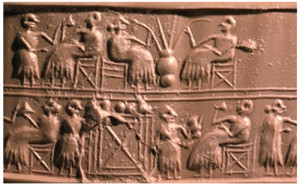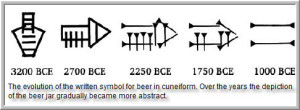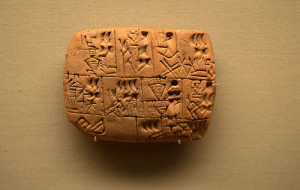Give MDMA a Chance?

In August of 2017 the FDA designated MDMA-assisted psychotherapy as a breakthrough treatment for PTSD. Bringing MDMA to market as a legal, legitimate therapeutic agent has been the goal of Rick Doblin, the Executive Director of MAPS (Multidisciplinary Association for Psychedelic Studies), since he founded the nonprofit in 1986. That was one year after the DEA classified MDMA, better known as the street drug ecstasy, as a Schedule I controlled substance. Doblin said: “For the first time ever, psychedelic-assisted psychotherapy will be evaluated in Phase 3 trials for possible prescription use, with MDMA-assisted psychotherapy for PTSD leading the way.”
The MAPS press release said the Phase 3 trials will assess the efficacy and safety of MDMA-assisted therapy in 200-300 participants with PTSD in the U.S., Canada and Israel. Two Phase III clinical trial studies will begin enrolling participants in the spring of 2018. Randomized participants will receive three day-long sessions of either MDMA or placebo in conjunction with psychotherapy over a 12-week treatment period. There will also be 12 associated 90-minute nondrug preparatory and integration sessions. Now that the FDA is onboard, Doblin said MAPS plans to start negotiations with the European Medicines Agency.
Speaking for MAPS, Amy Emerson, said the Phase 2 data was extremely promising. Out of 107 participants, 61% no longer qualified for PTSD after three sessions of MDMA-assisted psychotherapy two months after treatment. Then at the 12-month follow up, 68% no longer had PTSD. “All Phase 2 participants had chronic, treatment-resistant PTSD, and had suffered from PTSD for an average of 17.8 years.” The Phase 2 trials are being prepared for publication.
The willingness of MAPS to use the existing clinical trial process to scientifically validate the potential therapeutic benefits of MDMA is encouraging. Running the FDA gauntlet for drug approval, for better or worse, is the most effective process we currently have to prevent a return to the days of patent medicines, when anything and everything was promoted as “cures” and “treatments” to an unsuspecting public. Those were the days when cocaine was in tonics (Coca Cola); heroin was in cough suppressants and teething medication; and the typical heroin addict was a middle class woman in her forties.
At least one individual at John Hopkins has referred to the recent interest of MAPS and others into the therapeutic effects of psychedelic substances as a “psychedelic renaissance.” Writing for Massive, Benjamin Bell said: “Astounding preliminary research suggests psychedelics may yet revolutionize mental health care.” His historical gloss painted the history of the medical use of psychedelics as going from a potential revolution in psychotherapy during the 1950s to drug-addled lunacy by 1968. The culprits responsible for this change, according to Bell, were Timothy Leary and Richard Alport. “Although the pair began as respected researchers at Harvard, their firing coincided with their choice to promote hallucinogens in unique, and distinctly non-academic, ways.”
Unwittingly, when Harvard psychologist Timothy Leary signaled springtime for the “Summer of Love,” promoting LSD as a means to achieve cosmic connection, he also drew closed the curtain on academic research into a class of substances which held massive promise.
Richard Nixon labeled Leary as “The most dangerous man in America.” Alport went to India and a spiritual quest and changed his name to Ram Dass. In 1968, the US government outlawed all hallucinogens, universally restricting research on the substances. In the early 1980s, there was a brief time of psychotherapeutic research with MDMA. “But recreational use quickly captured the spotlight, and MDMA was classified as a Schedule 1 drug” in 1985. This was what motivated Rick Doblin to found MAPS.
According to The Washington Post, Doblin used LSD “as a rebellious, long-haired college freshman in the 1970s.” He believes it helped him see the world and himself in new ways. He wanted to become a therapist and use psychedelics to help others achieve similar insights, but he couldn’t because LSD was banned. When MDMA was criminalized, he realized psychedelics were too much on the fringe of culture to win public support. “The flaw of the early psychedelic movement was that they made it countercultural, a revolution. . . . Culture is dominant. Culture is always going to win.” He decided he had to bring psychedelics as therapeutic agents into the mainstream.
Doblin was admitted to the public policy PhD program at Harvard, shaved off his moustache, cut his hair and “learned to navigate the federal bureaucracy.” He laughed about how simple it was. “You put on a suit, and suddenly everyone thinks you’re fine.” Instead of fighting government officials, he sought to use science to win them over. So MAPS was born. And it was no accident the organization chose PTSD as its initial foray into its quest to end the government ban on psychedelics. Dobin said: “We wanted to help a population that would automatically win public sympathy. . . . No one’s going to argue against the need to help them.” He added that if you were going to design a drug to be used as an adjunct in psychotherapy to treat PTSD, “MDMA would be it.”
But his dream extends beyond just developing a treatment for PTSD. Rick Doblin dreams of a time when psychedelic treatment centers are in every city. People could go there for enhanced couples therapy, spiritual experiences and personal growth. “These drugs are a tool that can make people more compassionate, tolerant, more connected with other humans and the planet itself.” He thinks they can help address homelessness, war and even global warming. Needless to say, this kind of talk makes others nervous.
Despite its promise, there are risks. What’s sold on the street as “molly” is often not MDMA See “MDMA—Not!” for more on this topic. At high doses, it can cause the body to over heat. It can cause anxiety and increase stress. Chronic use can cause memory impairment. But there are additional concerns with MDMA not mentioned in The Washington Post.
The National Institute on Drug Abuse (NIDA) related the following in its article on MDMA (Ecstasy) Abuse. MDMA was said to affect the brain by increasing the activity of at least three neurotransmitters: serotonin, dopamine, and norepinephrine. “Like other amphetamines, MDMA enhances release of these neurotransmitters and/or blocks their reuptake,resulting in increased neurotransmitter levels within the synaptic cleft (the space between the neurons at a synapse).” Releasing large amounts of serotonin causes the brain to become depleted of this neurotransmitter, contributing to the negative psychological aftereffects some people experience for several days after taking MDMA.
Low serotonin is associated with poor memory and depressed mood, thus these findings are consistent with studies in humans that have shown that some people who use MDMA regularly experience confusion, depression, anxiety, paranoia, and impairment of memory and attention processes. In addition, studies have found that the extent of MDMA use in humans correlates with a decrease in serotonin metabolites and other markers of serotonin function and the degree of memory impairment. In addition, MDMA’s effects on norepinephrine contribute to the cognitive impairment, emotional excitation, and euphoria that accompanies MDMA use.
So despite the optimism of individuals like Rick Doblin and Benjamin Bell, there are clear dangers with a renaissance of psychedelic psychotherapeutics. Attributing objections and concerns to over fifty years “of drug prohibition and abstinence-only education,” as well as “a culture that has shaped the negative stigma of all psychedelics,” is disingenuous and dismissive of the legitimate concerns. Should there be further research into the potential for MDMA-assisted psychotherapy as a breakthrough treatment for PTSD? If all they are saying, is give MDA a chance, then absolutely. See the photo in Bell’s article of Timothy Leary singing, “Give Peace a Chance” with John Lennon and Yoko Ono.
But let’s not run ahead of the science to treat other emotional or psychiatric problems; or apply psychedelics to resolve the problems of world peace, homelessness and global warming just yet.



